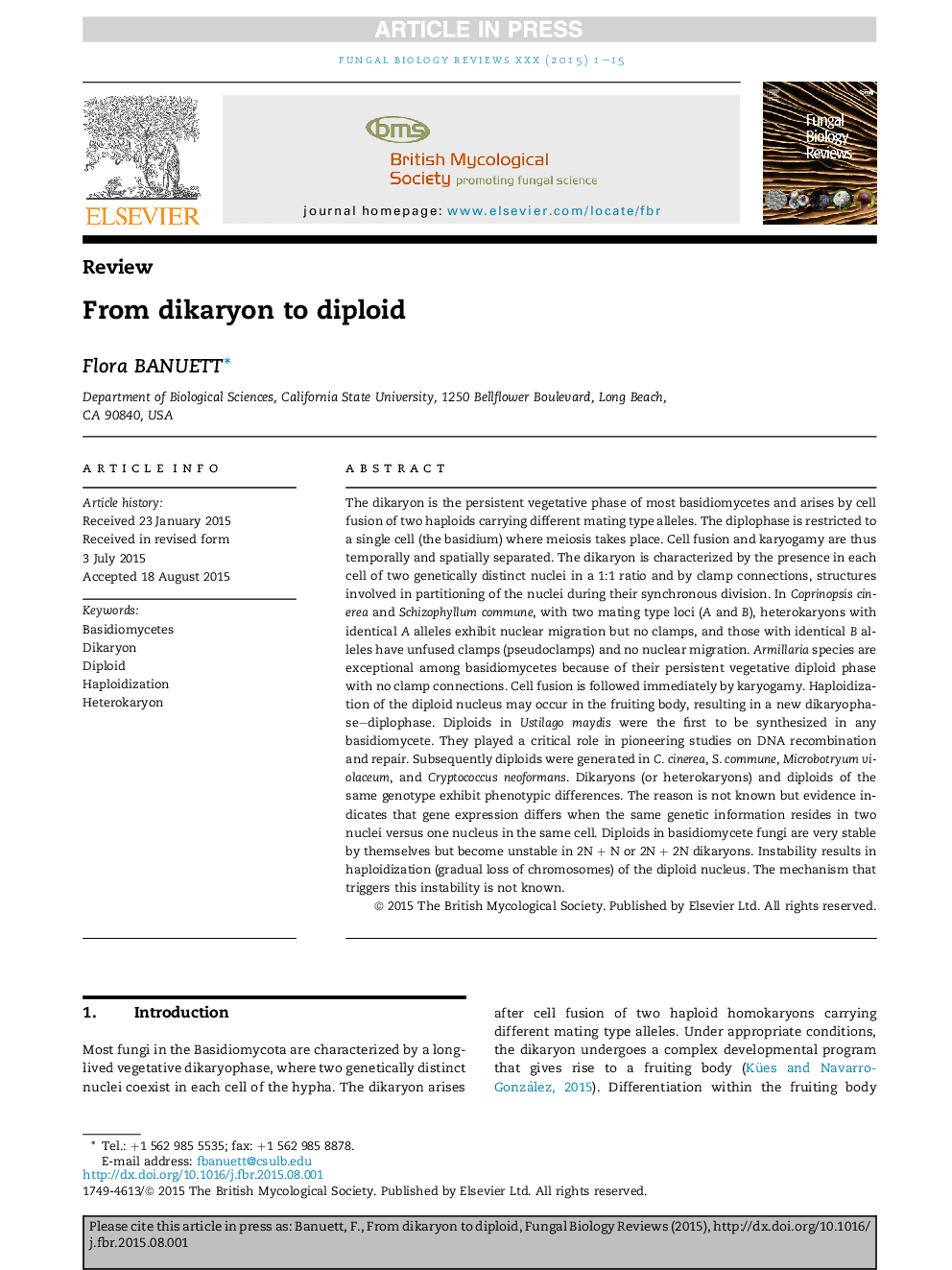| کد مقاله | کد نشریه | سال انتشار | مقاله انگلیسی | نسخه تمام متن |
|---|---|---|---|---|
| 8470380 | 1549961 | 2015 | 15 صفحه PDF | دانلود رایگان |
عنوان انگلیسی مقاله ISI
From dikaryon to diploid
ترجمه فارسی عنوان
از دیارایون تا دیپلید
دانلود مقاله + سفارش ترجمه
دانلود مقاله ISI انگلیسی
رایگان برای ایرانیان
کلمات کلیدی
موضوعات مرتبط
علوم زیستی و بیوفناوری
علوم کشاورزی و بیولوژیک
علوم کشاورزی و بیولوژیک (عمومی)
چکیده انگلیسی
The dikaryon is the persistent vegetative phase of most basidiomycetes and arises by cell fusion of two haploids carrying different mating type alleles. The diplophase is restricted to a single cell (the basidium) where meiosis takes place. Cell fusion and karyogamy are thus temporally and spatially separated. The dikaryon is characterized by the presence in each cell of two genetically distinct nuclei in a 1:1 ratio and by clamp connections, structures involved in partitioning of the nuclei during their synchronous division. In Coprinopsis cinerea and Schizophyllum commune, with two mating type loci (A and B), heterokaryons with identical A alleles exhibit nuclear migration but no clamps, and those with identical B alleles have unfused clamps (pseudoclamps) and no nuclear migration. Armillaria species are exceptional among basidiomycetes because of their persistent vegetative diploid phase with no clamp connections. Cell fusion is followed immediately by karyogamy. Haploidization of the diploid nucleus may occur in the fruiting body, resulting in a new dikaryophase-diplophase. Diploids in Ustilago maydis were the first to be synthesized in any basidiomycete. They played a critical role in pioneering studies on DNA recombination and repair. Subsequently diploids were generated in C. cinerea, S. commune, Microbotryum violaceum, and Cryptococcus neoformans. Dikaryons (or heterokaryons) and diploids of the same genotype exhibit phenotypic differences. The reason is not known but evidence indicates that gene expression differs when the same genetic information resides in two nuclei versus one nucleus in the same cell. Diploids in basidiomycete fungi are very stable by themselves but become unstable in 2NÂ +Â N or 2NÂ +Â 2N dikaryons. Instability results in haploidization (gradual loss of chromosomes) of the diploid nucleus. The mechanism that triggers this instability is not known.
ناشر
Database: Elsevier - ScienceDirect (ساینس دایرکت)
Journal: Fungal Biology Reviews - Volume 29, Issues 3â4, December 2015, Pages 194-208
Journal: Fungal Biology Reviews - Volume 29, Issues 3â4, December 2015, Pages 194-208
نویسندگان
Flora Banuett,
